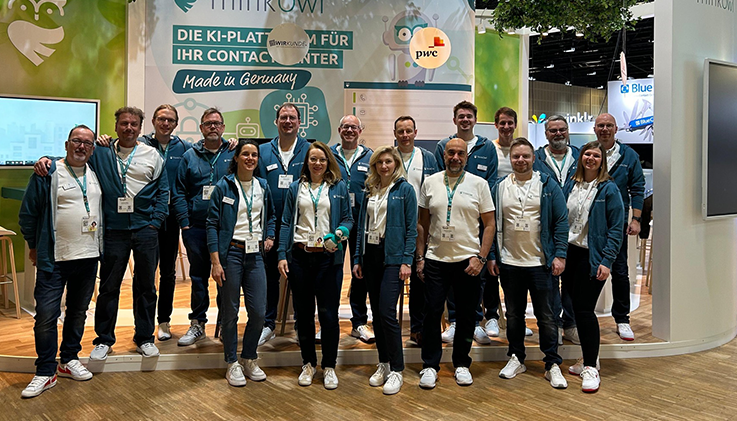In most businesses, the quality of customer experience (CX) is a critical differentiating factor against competitors. Therefore, it is essential to eliminate any risks by listening to the voice of customer and obtaining great insights into your customer demography. Let us find out how to do this.
What is the voice of customer (VoC)
Companies today face many challenges; therefore, to take care of customers and ensure profitability in business, running a thriving support center takes work. Few struggle to overcome these challenges, while others get stronger over time. The ones that succeed often pay close attention to listening to their customer's voice.
VoC is the customer’s voice that communicates much about your client's wishes, expectations, preferences, concerns, comments, or suggestions regarding a product or service.
VoC helps businesses keep tabs on their customers by taking stock of their needs, taking care of their wants, understanding client expectations, and streamlining the delivery of products and services as per their personal preferences. Interestingly, VoC is closely related to customer experience. When businesses pay heed to VoC, their customers are satisfied. Thus, improving the brand’s overall CX.
Research tells us that 90 percent of Americans use customer service as a factor in deciding whether or not to do business with a company. That is not all. Gartner predicts that by 2025, 60 percent of organizations with voice-of-the-customer programs will supplement traditional surveys by analyzing voice and text interactions with customers.
Good CX becomes a reality when the voice of the customer (VoC) is heard across multiple channels and acted upon. VoC helps to eliminate any risks in the harsh competitive market and gives excellent insights into your customer demography. However, a Forbes study tells us that only 20 to 25 percent of companies effectively listen to customers.
VoC analytics can provide insight to ensure customers are heard and how companies can actively improve service, sales, and revenue. Take a look at the benefits of collecting voice of customer.
- Provides customer intelligence by telling what clients expect from your brand
- It gives your brand a 360-degree view of your customers across multiple channels
- Aids product intelligence by providing accurate data on product usage and customer behavior
- Provides predictive intelligence by informing brands about churn risk from clients
- Aids business growth by providing data about potential expansion opportunities
Also read: Why Customer Service Is Integral To New-Age Marketing Strategies
How do we collect the voices of customers
There are various ways to obtain VoC. We will look at six popular methods to collect VoC in detail.
1. On-site customer surveys
On-site surveys collect customer feedback regarding their experience from the moment they land on your website. On-site surveys are critical to VoC, as they help understand customers’ journey when it begins. It helps to gather feedback from clients, drive improvements across the customer journey, and measure their level of satisfaction.
Creating a survey in ThinkOwl is super easy. You only have to set the following parameters, such as survey question, rating scale, rating order, text labels, and mode of sending the survey, and it will be ready to launch.
2. Customer interviews
Customer interviews are direct interactions with your customers. Through a set of prepared questions, you try and identify what your client's pain points are and address them efficiently and in a responsible way. Planned customer interviews are scheduled well in advance, and the customer gets time to prepare a list of discussion points beforehand.
Customer interviews can be ad hoc too! While the most popular style of ad hoc interview is online surveys due to their accessibility and convenience. On-the-spot interviews can also be real-time and focus on specific experiences and events.
Benefits of conducting client interviews.
- It allows businesses to assess customer demands, highlight customer pain points, and provide ideas for product development and upgrades.
- Interviews give businesses a chance to empathize with customers.
- The business can ask clients for referrals if the interview goes well, leading to new business opportunities.
3. Social media
Tuning in to social media and listening to what customers have to say regarding your brand is perhaps the most popular way of listening to the voice of customers. It gives you valuable insights that are raw in real time. By collecting data that are not shaped by any preconceptions, you get the most accurate insights into your customers' minds.
Although it is imperative to give all voice of customer channels equal importance, social media can make things ‘viral.’ News spreads like wildfire, and the press is tuned into it. Not all coverage is good coverage; hence, brands should constantly keep scanning to prevent any outbreak of customer dissatisfaction and rush to solve the problem before it assumes tidal proportions.
4. Feedback forms
Feedback forms help you understand your client’s needs and improve your brand. It is your best bet to understand what your customers have to say after utilizing your product. Thanks to digitalization, feedback forms are cost-efficient and faster and allow your clients to provide thoughtful answers.
Like customer surveys, feedback forms contain pro forma questions sent out to customers at intervals. Depending on the format, client feedback can be objective or subjective.
5. Interactive voice response (IVR) / e-mail
Through emails or IVR, customers can give detailed responses and explain why they like a product. In case they are not satisfied with the overall experience, they can list down various parameters where they want the product or service to be improved. Customer emails carry a plethora of information for businesses that can be analyzed and used to better future offerings.
6. NPS / CSAT
Net promoter score (NPS) and customer satisfaction score (CSAT) are both customer satisfaction metrics that are frequently used by organizations to track customer satisfaction and loyalty. NPS/CSAT is used by businesses to measure customer satisfaction regarding specific touchpoints or purchases or regarding the overall CX. Metrics like NPS/CSAT are strong indicators of product repurchase, customer satisfaction, and customer retention. They also facilitate understanding customer expectations and sentiment towards your brand.
Also read: Connect Your Instagram Business Account With ThinkOwl To Source Customer Inquiries
Implement a multi-channel customer service solution and never miss out on any opportunity to hear VoC. The software is low-code, AI-powered, and scalable, making it suitable for businesses of all sizes. Make a difference to your clients by ushering in a new era of connected customer service with ThinkOwl. Book your free-of-cost 30-day trial today.













